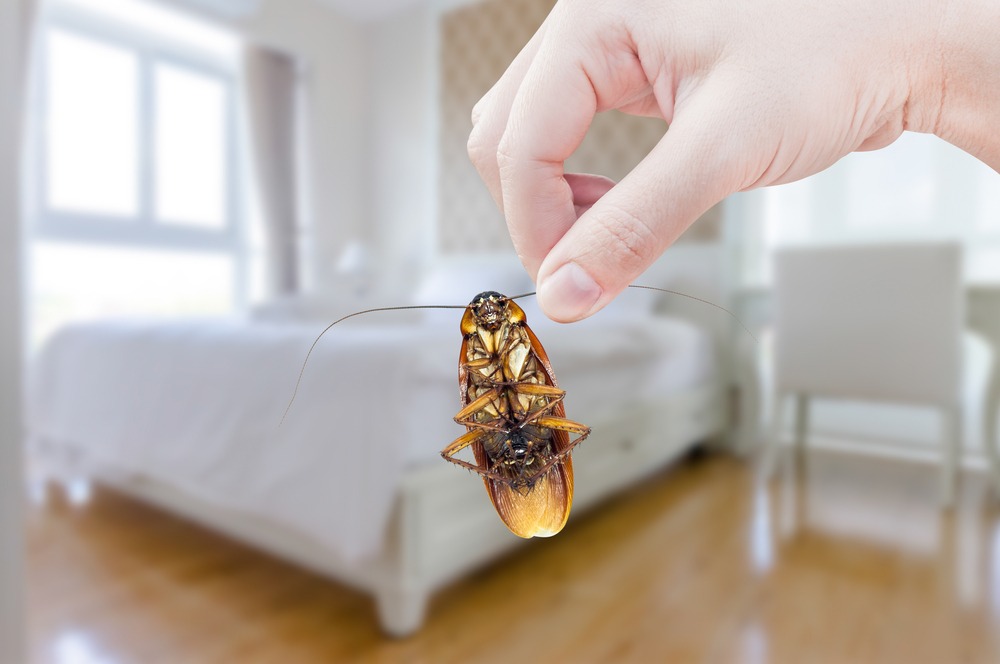Bugs and insects can be a nuisance when they get in the house, start snacking on your food, and appear in the shower. Insects usually want to be inside for the same reasons you do.
There’s food, water, comfortable linens and other commodities.
However, when your guests have more than two legs and overstay their welcome, it might be time to take action.
Preventive measures are a great way to ensure this problem doesn’t persist.
Although it can feel inevitable to have crawling visitors in the humid summer months, you can take various steps to keep your home pest-free.
Beyond maintaining a tidy space, using natural pest control remedies can help keep insects at bay.
Why Do You Have Bugs?
One of the main reasons insects come in the house is because there is something particular inside that’s enticing to them.
This could be a steady supply of crumbs on the floor, small crevices that make it easy to go in and out or a humid environment away from the hot sun.
In reality, your house hosts an entire ecosystem of bugs. Common varieties include ants, cockroaches, earwigs, flies, gnats, and spiders.
The average human household contains about 100 species of insects, spiders, and other arthropods.
No matter how clean you keep your home, there are bound to be a few intruders.
That may come as a shock, but they don’t usually make their presence known, and it’s possible to reduce their numbers.
Are All Bugs Pests?

The idea of always having bugs in the house is a little creepy.
However, some studies indicate that the coexistence of bugs and humans may positively impact humans’ physical and mental well-being.
For example, there is evidence to suggest that some modern ailments might be connected to a lack of exposure to biological diversity.
Microorganisms and household insects can bridge that gap and beneficially link outdoor diversity to your home.
Insects often seem to view human households as extensions of their habitats, making it difficult to prevent their entrance.
However, indoor bugs do have their perks.
Many still follow ecological patterns and food chains, even in the house. Spiders eat pest insects such as flies, moths, and mosquitoes, while house centipedes prefer crickets, earwigs, roaches, and silverfish.
Distinguishing the helpful bugs from the pests is an important step in knowing which areas to target.
Put Down the Harsh Chemicals
People don’t often read the ingredients label when they’re looking for indoor cleaners or insect repellent.
Advertisements may market a certain product as the “safest” or “child-friendly,” but many popular household cleaners can be toxic.
Many contain chemicals such as phthalates, ammonia, chlorine, and other hazardous compounds that can harm the respiratory system, cause rashes, and irritate eyes.
When pests become a problem, consider ditching the over-the-counter bug sprays and repellents that are packed with pesticides.
All-natural insect repellent contains less-harsh chemicals, and it can be safer for the skin.
Natural alternatives don’t typically have the burning smell of synthetic repellents, and many of the ingredients, such as peppermint and essential oils, are natural energizers.
Are you ready to try some natural methods for deterring unwanted bugs from your home?
Graphic created by ImproveNet.
Author bio: Excited to share her love of home design and décor with readers, Jaclyn Crawford started with ImproveNet in 2016. As a staff writer, she enjoys chronicling the latest trends and ways you can make your home the loveliest it can be. You may also find her in ImproveNet videos, sharing tips and trends for your home.




Comments are closed.